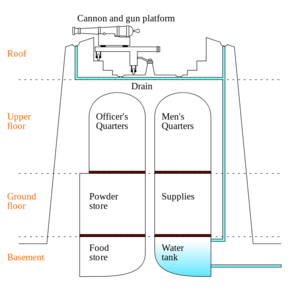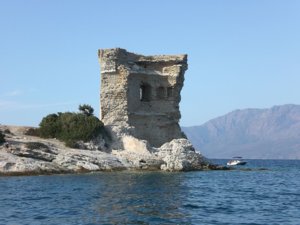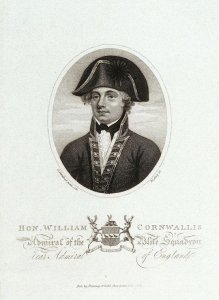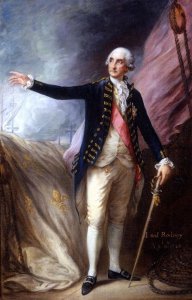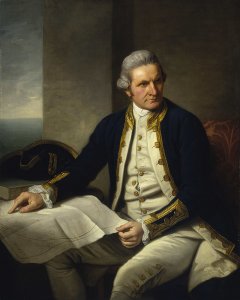Today in Naval History - Naval / Maritime Events in History
26th of January
some of the events you will find here,
please use the following link where you will find more details and all other events of this day .....
1781 - Butterworth , launched in 1778 in France as the highly successful 32-gun privateer Américaine, was captured by HMS Prudente
Butterworth was launched in 1778 in France as the highly successful 32-gun privateer Américaine, of Granville. The British Royal Navy captured her early in 1781. She first appeared in a commercial role in 1784 as America, and was renamed in 1785 as Butterworth. She served primarily as a whaler in the Greenland whale fisheries. New owners purchased her in 1789. She underwent a great repair in 1791 that increased her size by almost 20%. She is most famous for her role in the "Butterworth Squadron", which took her and two ship's tenders on an exploration, sealing, otter fur, and whaling voyage to Alaska and the Pacific Coast of North America. She and her consorts are widely credited with being the first European vessels to enter, in 1794, what is now Honolulu harbour. After her return to England in 1795, Butterworth went on three more whaling voyages to the South Pacific, then Africa, and then the South Pacific again. In 1802 she was outward bound on her fourth of these voyage, this to the South Pacific, when she was lost.
1784 - Sévère, a 64-gun ship of the line of the French Navy, wrecked in Table Bay at Cape of Good Hope
Career
Built as an Indiaman by Roth on the lines of a previous ship, Superbe, that had been sold to the Austrian East India Company, Sévère was purchased by the Crown in November 1778 and commissioned for the American Revolutionary War.
She was incorporated into Suffren's squadron. She took part in the Battle of Negapatam in 1782, under Captain Villeneuve-Cilart; during the battle, Villeneuve panicked and attempted to strike, but was prevented from doing so by officers Dieu and Kerlero de Rosbo. Sévère ended up causing damage to HMS Sultan.
Sévère was later armed en flûte, and was wrecked on 26 January 1784 at the Cape of Good Hope.
1787 – Launch of HMS Captain, a 74-gun third-rate ship of the line of the Royal Navy,
HMS Captain was a 74-gun third-rate ship of the line of the Royal Navy, launched on 26 November 1787 at Limehouse. She served during the French revolutionary and Napoleonic Wars before being placed in harbour service in 1799. An accident caused her to burn and founder in 1813. Later that year she was raised and broken up.

The 'Captain' capturing the 'San Nicolas' and the 'San José' at the Battle of Cape St Vincent, 14 February 1797


1793 - Horatio Nelson appointed to command HMS Agamemnon (1781 - 64)
HMS Agamemnon was a 64-gun third-rate ship of the line of the British Royal Navy. She saw service in the Anglo-French War, French Revolutionary and Napoleonic Wars, and fought in many of the major naval battles of those conflicts. She is remembered as being Nelson's favourite ship, and was named after the mythical ancient Greek king Agamemnon, being the first ship of the Royal Navy to bear the name.
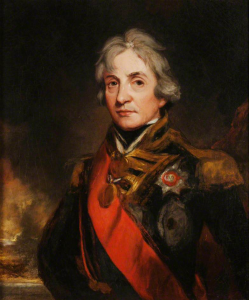
Horatio, Lord Nelson, by John Hoppner

1800 - HMS Brazen (18), James Hanson, was driven by a gale on to the Ave Rocks near Newhaven and was destroyed
HMS Brazen was the French privateer Invincible General Bonaparte (or Invincible Bonaparte or Invincible Buonaparte), which the British captured in 1798. She is best known for her wrecking in January 1800 in which all but one of her crew drowned.

Scale: 1:48. Plan showing the body plan, sheer lines with inboard detail and figurehead, stern board outline, and longitudinal half-breadth for Brazen (captured 1798), a captured French privateer prior to being fitted as a 16-gun Ship Sloop. The plans shows the ship with her original French name of 'Invincible General Bonaparte'. Note the pronounced 'V' shaped hull, indicating that she was built for speed. Signed by Edward Tippett [Master Shipwright, Portsmouth Dockyard, 1793-1799].
1805 - HM brig Epervier (16), John Impey, captured the French privateer schooner L'Elizabeth (4)
HMS Epervier was a French 16-gun Alcyon-class brig. HMS Egyptienne captured her in the Atlantic Ocean on 27 July 1803; she was taken into Royal Navyservice under her existing name. Before being broken up in 1811 she captured several prizes and was present at the Battle of San Domingo. Her crew received a clasp to the Naval General Service Medal for their participation in that battle and another for an action in December 1808. She was laid up in late 1810 and was sold in 1811.

Scale: 1:48. Plan showing the body plan with stern board decoration and name in a cartouche on the stern counter, sheer lines with inboard detail and figurehead, and longitudinal half-breadth half-breadth for the Epervier (captured 1803), a captured French Brig, possibly as fitted as an 18-gun Brig Sloop. Signed by Nicholas Diddams [Master Shipwright, Portsmouth Dockyard, 1803-1823].
1807 – Launch of HMS Porcupine, a Royal Navy Banterer-class post ship of 24 guns
HMS Porcupine was a Royal Navy Banterer-class post ship of 24 guns, launched in 1807. She served extensively and relatively independently in the Adriatic and the Western Mediterranean during the Napoleonic Wars, with her boats performing many cutting out expeditions, one of which earned for her crew the Naval General Service Medal. She was sold for breaking up in 1816 but instead became the mercantile Windsor Castle. She was finally sold for breaking up in 1826 at Mauritius.

Model of HMS Cyane (sistership)
1788 – The British First Fleet, led by Arthur Phillip, sails into Port Jackson (Sydney Harbour) to establish Sydney, the first permanent European settlement on Australia.
Commemorated as Australia Day
The First Fleet was the 11 ships that departed from Portsmouth, England, on 13 May 1787 to found the penal colony that became the first European settlement in Australia. The Fleet consisted of two Royal Navy vessels, three store ships and six convict transports, carrying between 1,000 and 1,500 convicts, marines, seamen, civil officers and free people (accounts differ on the numbers), and a large quantity of stores. From England, the Fleet sailed southwest to Rio de Janeiro, then east to Cape Town and via the Great Southern Ocean to Botany Bay, arriving over the period of 18 to 20 January 1788, taking 250 to 252 days from departure to final arrival.

The First Fleet entering Port Jackson on 26 January 1788 by Edmund Le Bihan
1808 - William Bligh deposed as governor of NSW by 'Rum Rebellion' mutiny.
The Rum Rebellion of 1808 was the only successful armed takeover of government in Australian history. During the 19th century, it was widely referred to as "the Great Rebellion".

A propaganda cartoon created within hours of William Bligh's arrest, portraying him as a coward
1826 – Launch of HMS Sulphur, a 10-gun Hecla-class bomb vessel of the British Royal Navy
HMS Sulphur was a 10-gun Hecla-class bomb vessel of the British Royal Navy, famous as one of the ships in which Edward Belcher explored the Pacificcoast of the Americas.


1866 - USS Wyandotte, originally USS Western Port, was a steamer acquired by the Navy as a gunboat for the Paraguay Expedition wrecked
USS Wyandotte, originally USS Western Port, was a steamer acquired by the Navy as a gunboat for the Paraguay Expedition in 1858. When the crisis of the American Civil War occurred, she operated in support of the Union Navy blockade of Confederate waterways.

The Paraguay Squadron (Harper's Weekly, New York, October 16, 1858).
1911 – Glenn Curtiss flies the first successful American seaplane.
The Curtiss Model E was an early aircraft developed by Glenn Curtiss in the United States in 1911.

Curtiss a-1 pusher 1911, the United States Navy's first aircraft
1913 - The body of John Paul Jones is laid in its final resting place in the Chapel of the Naval Academy, Annapolis, Md.
John Paul Jones (born John Paul; July 6, 1747 – July 18, 1792) was the United States' first well-known naval commander in the American Revolutionary War. He made many friends and enemies—who accused him of piracy—among America's political elites, and his actions in British waters during the Revolution earned him an international reputation which persists to this day. As such, he is sometimes referred to as the "Father of the American Navy" (a sobriquet he shares with John Barry and John Adams).

John Paul Jones's marble and bronze sarcophagus at the United States Naval Academy
26th of January
some of the events you will find here,
please use the following link where you will find more details and all other events of this day .....
Naval/Maritime History - 27th of August - Today in Naval History - Naval / Maritime Events in History
Today in Naval History - Naval / Maritime Events in History 24 January 1870 - screw sloop of war USS Oneida sunk after a collision with british steamer Bombay The second USS Oneida was a screw sloop-of-war in the United States Navy. During the Civil War, she...
shipsofscale.com
1781 - Butterworth , launched in 1778 in France as the highly successful 32-gun privateer Américaine, was captured by HMS Prudente
Butterworth was launched in 1778 in France as the highly successful 32-gun privateer Américaine, of Granville. The British Royal Navy captured her early in 1781. She first appeared in a commercial role in 1784 as America, and was renamed in 1785 as Butterworth. She served primarily as a whaler in the Greenland whale fisheries. New owners purchased her in 1789. She underwent a great repair in 1791 that increased her size by almost 20%. She is most famous for her role in the "Butterworth Squadron", which took her and two ship's tenders on an exploration, sealing, otter fur, and whaling voyage to Alaska and the Pacific Coast of North America. She and her consorts are widely credited with being the first European vessels to enter, in 1794, what is now Honolulu harbour. After her return to England in 1795, Butterworth went on three more whaling voyages to the South Pacific, then Africa, and then the South Pacific again. In 1802 she was outward bound on her fourth of these voyage, this to the South Pacific, when she was lost.
1784 - Sévère, a 64-gun ship of the line of the French Navy, wrecked in Table Bay at Cape of Good Hope
Career
Built as an Indiaman by Roth on the lines of a previous ship, Superbe, that had been sold to the Austrian East India Company, Sévère was purchased by the Crown in November 1778 and commissioned for the American Revolutionary War.
She was incorporated into Suffren's squadron. She took part in the Battle of Negapatam in 1782, under Captain Villeneuve-Cilart; during the battle, Villeneuve panicked and attempted to strike, but was prevented from doing so by officers Dieu and Kerlero de Rosbo. Sévère ended up causing damage to HMS Sultan.
Sévère was later armed en flûte, and was wrecked on 26 January 1784 at the Cape of Good Hope.
1787 – Launch of HMS Captain, a 74-gun third-rate ship of the line of the Royal Navy,
HMS Captain was a 74-gun third-rate ship of the line of the Royal Navy, launched on 26 November 1787 at Limehouse. She served during the French revolutionary and Napoleonic Wars before being placed in harbour service in 1799. An accident caused her to burn and founder in 1813. Later that year she was raised and broken up.
The 'Captain' capturing the 'San Nicolas' and the 'San José' at the Battle of Cape St Vincent, 14 February 1797
1793 - Horatio Nelson appointed to command HMS Agamemnon (1781 - 64)
HMS Agamemnon was a 64-gun third-rate ship of the line of the British Royal Navy. She saw service in the Anglo-French War, French Revolutionary and Napoleonic Wars, and fought in many of the major naval battles of those conflicts. She is remembered as being Nelson's favourite ship, and was named after the mythical ancient Greek king Agamemnon, being the first ship of the Royal Navy to bear the name.

Horatio, Lord Nelson, by John Hoppner
1800 - HMS Brazen (18), James Hanson, was driven by a gale on to the Ave Rocks near Newhaven and was destroyed
HMS Brazen was the French privateer Invincible General Bonaparte (or Invincible Bonaparte or Invincible Buonaparte), which the British captured in 1798. She is best known for her wrecking in January 1800 in which all but one of her crew drowned.
Scale: 1:48. Plan showing the body plan, sheer lines with inboard detail and figurehead, stern board outline, and longitudinal half-breadth for Brazen (captured 1798), a captured French privateer prior to being fitted as a 16-gun Ship Sloop. The plans shows the ship with her original French name of 'Invincible General Bonaparte'. Note the pronounced 'V' shaped hull, indicating that she was built for speed. Signed by Edward Tippett [Master Shipwright, Portsmouth Dockyard, 1793-1799].
1805 - HM brig Epervier (16), John Impey, captured the French privateer schooner L'Elizabeth (4)
HMS Epervier was a French 16-gun Alcyon-class brig. HMS Egyptienne captured her in the Atlantic Ocean on 27 July 1803; she was taken into Royal Navyservice under her existing name. Before being broken up in 1811 she captured several prizes and was present at the Battle of San Domingo. Her crew received a clasp to the Naval General Service Medal for their participation in that battle and another for an action in December 1808. She was laid up in late 1810 and was sold in 1811.
Scale: 1:48. Plan showing the body plan with stern board decoration and name in a cartouche on the stern counter, sheer lines with inboard detail and figurehead, and longitudinal half-breadth half-breadth for the Epervier (captured 1803), a captured French Brig, possibly as fitted as an 18-gun Brig Sloop. Signed by Nicholas Diddams [Master Shipwright, Portsmouth Dockyard, 1803-1823].
1807 – Launch of HMS Porcupine, a Royal Navy Banterer-class post ship of 24 guns
HMS Porcupine was a Royal Navy Banterer-class post ship of 24 guns, launched in 1807. She served extensively and relatively independently in the Adriatic and the Western Mediterranean during the Napoleonic Wars, with her boats performing many cutting out expeditions, one of which earned for her crew the Naval General Service Medal. She was sold for breaking up in 1816 but instead became the mercantile Windsor Castle. She was finally sold for breaking up in 1826 at Mauritius.
Model of HMS Cyane (sistership)
1788 – The British First Fleet, led by Arthur Phillip, sails into Port Jackson (Sydney Harbour) to establish Sydney, the first permanent European settlement on Australia.
Commemorated as Australia Day
The First Fleet was the 11 ships that departed from Portsmouth, England, on 13 May 1787 to found the penal colony that became the first European settlement in Australia. The Fleet consisted of two Royal Navy vessels, three store ships and six convict transports, carrying between 1,000 and 1,500 convicts, marines, seamen, civil officers and free people (accounts differ on the numbers), and a large quantity of stores. From England, the Fleet sailed southwest to Rio de Janeiro, then east to Cape Town and via the Great Southern Ocean to Botany Bay, arriving over the period of 18 to 20 January 1788, taking 250 to 252 days from departure to final arrival.
The First Fleet entering Port Jackson on 26 January 1788 by Edmund Le Bihan
1808 - William Bligh deposed as governor of NSW by 'Rum Rebellion' mutiny.
The Rum Rebellion of 1808 was the only successful armed takeover of government in Australian history. During the 19th century, it was widely referred to as "the Great Rebellion".
A propaganda cartoon created within hours of William Bligh's arrest, portraying him as a coward
1826 – Launch of HMS Sulphur, a 10-gun Hecla-class bomb vessel of the British Royal Navy
HMS Sulphur was a 10-gun Hecla-class bomb vessel of the British Royal Navy, famous as one of the ships in which Edward Belcher explored the Pacificcoast of the Americas.
1866 - USS Wyandotte, originally USS Western Port, was a steamer acquired by the Navy as a gunboat for the Paraguay Expedition wrecked
USS Wyandotte, originally USS Western Port, was a steamer acquired by the Navy as a gunboat for the Paraguay Expedition in 1858. When the crisis of the American Civil War occurred, she operated in support of the Union Navy blockade of Confederate waterways.
The Paraguay Squadron (Harper's Weekly, New York, October 16, 1858).
1911 – Glenn Curtiss flies the first successful American seaplane.
The Curtiss Model E was an early aircraft developed by Glenn Curtiss in the United States in 1911.
Curtiss a-1 pusher 1911, the United States Navy's first aircraft
1913 - The body of John Paul Jones is laid in its final resting place in the Chapel of the Naval Academy, Annapolis, Md.
John Paul Jones (born John Paul; July 6, 1747 – July 18, 1792) was the United States' first well-known naval commander in the American Revolutionary War. He made many friends and enemies—who accused him of piracy—among America's political elites, and his actions in British waters during the Revolution earned him an international reputation which persists to this day. As such, he is sometimes referred to as the "Father of the American Navy" (a sobriquet he shares with John Barry and John Adams).
John Paul Jones's marble and bronze sarcophagus at the United States Naval Academy



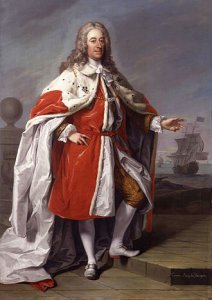

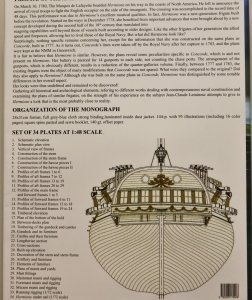
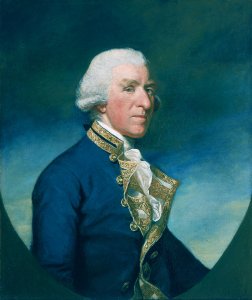


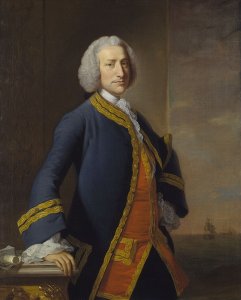

 Line
Line